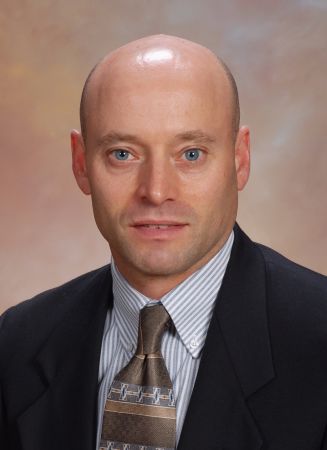Alwyn Eades

Interests: Alwyn Eades was trained as a physicist and, after graduation, worked in Chile, Bristol (UK) and at the University of Illinois before coming to Lehigh. He specialized in electron microscopy with a particular interest in convergent-beam diffraction and the determination of symmetry. He was president of the Microscopy Society of America (2003) and of CIASEM (The InterAmerican Committee of Societies for Electron Microscopy 2005).
Arnold Marder

Interests: Arnold R. Marder, PhD, FASM, is the R.D. Stout Distinguished Emeritus Professor of Materials Science and Engineering at Lehigh University. He received his BS and MS from the Polytechnic Institute of Brooklyn and his PhD from Lehigh University. After 20 years at Bethlehem Steel Research, he joined the Energy Research Center at Lehigh University as Professor in the Department of Materials Science and Engineering. He is a Fellow of ASM International and has received awards for his research from ASM, ASTM, and AWS. His expertise is concentrated in physical metallurgy and structure/property relationships in hot-dip coatings and steel alloys.
Charles Lyman
David Williams
Martin Harmer

Interests: Dr Martin P. Harmer is Professor Emeritus of Material Science and Engineering, Senior Research Scientist, and Director of the Lehigh Nano/Human Interfaces Presidential Research Initiative at Lehigh University. He studied ceramics at Leeds University in England from 1972 to 1980, where he graduated with a first class honors B.Sc. degree and a Ph.D. in ceramics, and he also received a D.Sc. degree from Leeds in 1995. He conducted his doctoral research on the rapid sintering of pure and doped alpha alumina under the supervision of Professor Sir Richard Brook. During his Ph.D. he spent one year on a graduate fellowship at the University of California at Berkeley, learning advanced techniques in transmission electron microscopy under the guidance of Professor Gareth Thomas. Dr. Harmer joined Lehigh University in 1980. He directed the Lehigh Center for Advanced Materials and Nanotechnology until 2015. From 2015- 17 he was Senior Faculty Advisor for Research Initiatives in the Rossin College of Engineering before taking up his current position of Director of the Lehigh Nano/Human Interfaces Presidential Research Initiative. He also currently Directs a 5-year $25M Cooperative Agreement research project with the Army Research Laboratory on “Lightweight High Entropy Alloy Discovery (LHEAD)”, in collaboration with The Ohio State University and Louisiana State University.
Dr. Harmer has supervised 65 Ph.D. students and 25 post-doctoral researchers and published ~350 papers. His research has focused on understanding the fundamental mechanisms of interfacial transport and microstructure development in inorganic materials. His work has led to fundamental discoveries about the nature of grain boundaries, including the breakthrough experimental discovery that grain boundaries exhibit phase-like behavior (called "grain boundary complexions"), which has provided new insight into long-standing mysteries in material science, such as the origin of abnormal grain growth in ceramics and the cause of grain boundary embrittlement in metal alloys. He has received numerous awards including the first Presidential Young Faculty Award from President Reagan, American Ceramic Society’s (ACerS) Distinguished Life Member Award, ACerS W. David Kingery Lifetime Achievement Award, ACerS Robert B. Sosman Lecture Award, and the Lehigh University Libsch Research Award and the Hillman Faculty Award..
Harmer is a United States Coast Guard Licensed Merchant Marine Officer and the Captain of a 39ft sportfishing vessel called the “Cheeky Monkey III”.
Richard Hertzberg
Slade Cargill

Interests: Slade Cargill received his B.S. degree in Physics from the Georgia Institute of Technology and his Ph.D. degree in Applied Physics from Harvard University. He held research and management positions at IBM, and he served on the engineering faculties of Yale, Columbia, and Lehigh Universities. His research has ranged from studying the structure and properties of amorphous materials to applying x-ray scattering, x-ray absorption spectroscopy, electron microscopy and cathodoluminescence techniques to electronic and magnetic materials and to solid state and microelectronic devices. Since retiring from Lehigh in 2007, he has developed and patented devices to prevent electric shock drownings, and he has published a monograph on this subject, Electric Shock Drowning: Causes and Prevention. He and his wife Susan divide their time between Longboat Key, FL, and Athens, NY. His avocations include tennis and boating.
John DuPont

Position: Professor Emeritus
Interests: Dr. DuPont graduated Cum Laude with a B.S. Degree in Metallurgical Engineering from Ohio State University and with M.S. and Ph.D. Degrees in Materials Science and Engineering from Lehigh University. He is currently the R.D. Stout Distinguished Professor of Materials Science & Engineering at Lehigh University. He is also Associate Director of Lehigh’s Energy Research Center, holds a joint appointment in the Mechanical Engineering Department, and was a founding Director of the National Science Foundation Manufacturing and Materials Joining Innovation Center, which is one of the largest welding research centers in the world.
